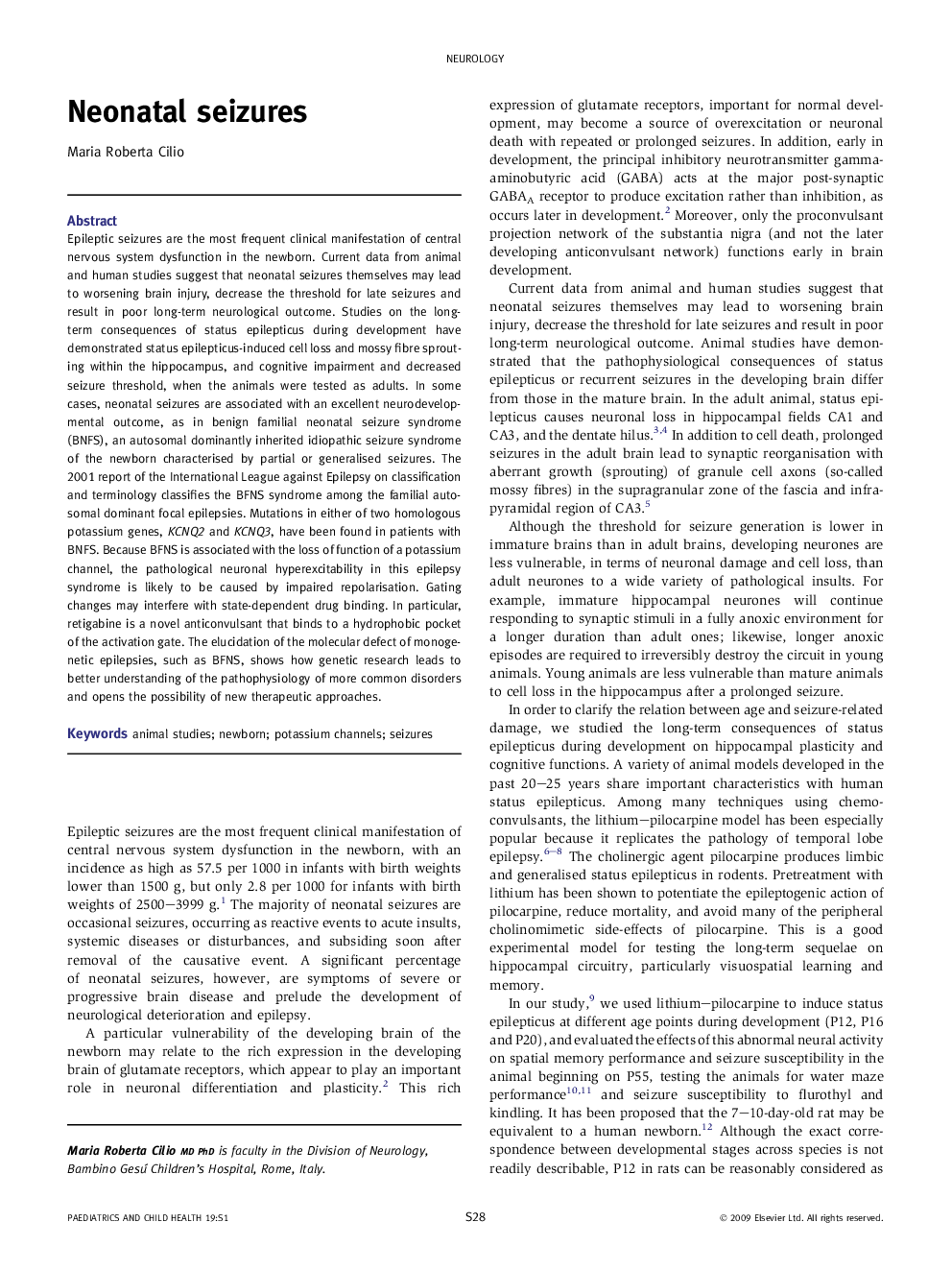| Article ID | Journal | Published Year | Pages | File Type |
|---|---|---|---|---|
| 4173350 | Paediatrics and Child Health | 2009 | 4 Pages |
Epileptic seizures are the most frequent clinical manifestation of central nervous system dysfunction in the newborn. Current data from animal and human studies suggest that neonatal seizures themselves may lead to worsening brain injury, decrease the threshold for late seizures and result in poor long-term neurological outcome. Studies on the long-term consequences of status epilepticus during development have demonstrated status epilepticus-induced cell loss and mossy fibre sprouting within the hippocampus, and cognitive impairment and decreased seizure threshold, when the animals were tested as adults. In some cases, neonatal seizures are associated with an excellent neurodevelopmental outcome, as in benign familial neonatal seizure syndrome (BNFS), an autosomal dominantly inherited idiopathic seizure syndrome of the newborn characterised by partial or generalised seizures. The 2001 report of the International League against Epilepsy on classification and terminology classifies the BFNS syndrome among the familial autosomal dominant focal epilepsies. Mutations in either of two homologous potassium genes, KCNQ2 and KCNQ3, have been found in patients with BNFS. Because BFNS is associated with the loss of function of a potassium channel, the pathological neuronal hyperexcitability in this epilepsy syndrome is likely to be caused by impaired repolarisation. Gating changes may interfere with state-dependent drug binding. In particular, retigabine is a novel anticonvulsant that binds to a hydrophobic pocket of the activation gate. The elucidation of the molecular defect of monogenetic epilepsies, such as BFNS, shows how genetic research leads to better understanding of the pathophysiology of more common disorders and opens the possibility of new therapeutic approaches.
